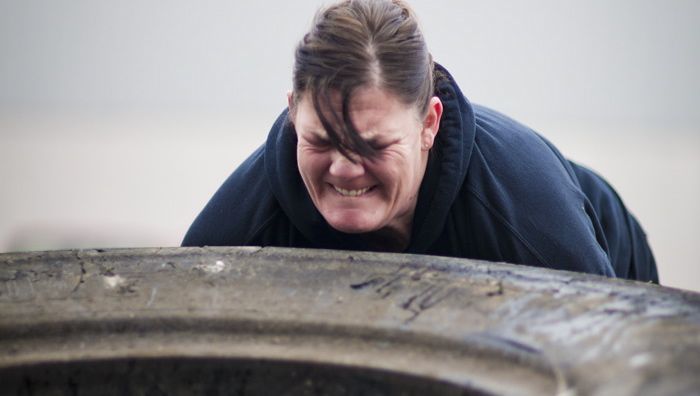
There's some method to the madness of finding the perfect tire to flip. Going to search out your first tire can be a daunting task. You need something you can flip without it being too easy, but the tire can’t weigh like a billion pounds, so you’re never able to flip it. Going to ask your local tire store for a used commercial tire is easy enough, but on some level you need to know what you are talking about and looking for.
There are two for sure ways to know what a tire weighs: get it weighed. OK, that’s really only one. In theory if you get it new from the manufacturer, it should be a standard weight. Even a brand new tire can and will vary in weight a bit. So the only real way to know what a tire truly weighs is to get it weighed.
To the average tire flipper, the actual weight of a tire is irrelevant. Most people just want to know the range of tire weight to be able to communicate their needs to the local tire store, but have no need or desire to know actual scale weight. Many local competitions have tire flips in them that are also estimates based off of a tire chart, tire wear and the promoter’s experience. Hauling a tire down to get it weighed isn’t the most practical or necessary thing to do.
If you’re estimating a tire weight off a chart, there are some things to keep in mind. Tire charts list the tire size and estimated weight of the tire when it was manufactured. That weight can vary considerably with a used tire due to tread wear and age of the tire. In addition, although tire sizes may be the same, the weight of a same sized tire can vary from manufacturer to manufacturer. Tire weight can vary by ply rating and if the tire has an “R” that means it is a radial and therefore heavier.
Each tire is different and feels different flipping. Tread wear patterns on the tire can make an impact. If there is no place to properly grip the tire, what seemingly should be an easy tire weight to flip may not prove true in reality. Some tires are taller, some are fatter, etc. All of these factors change the feel of the same weight tire.
Select a tire measurement that sits flat on the ground and comes up near your knee. This height is important because it will allow you to properly “push” into the tire in order to flip it. Once you have an idea how fat the tire needs to be, start looking at some tire sizes and weights on a chart. Keep in mind depending on the usage of the tire, there will be significant wear on the tire that will change it’s weight considerably. From there, call your local tire store that carries commercial tires. Explain what you’re looking for. They should be happy to help you out since they actually have to pay to get rid of the big, old used tires.
Keep in mind though, if you go bragging to your friends that you flipped a ba-jillion pound tire you better be able to back it up with scale weight. In addition, strongmen get very sensitive and outspoken about tire weight. At UGSS while I was flipping the tires, I started to wonder if Dave had his tires weighed.
In some camps, I couldn’t technically quote my tire flip in poundage since it wasn’t weighed. BUT…EliteFTS told me the tire weighed 900 pounds. Who would be dumb enough to argue with THE Dave Tate? If the tires weren’t weighed, I am confident there would be some bitching in the corner from someone that I didn’t actually flip a 900 pound tire. At the end of the day what mattered was they were heavy ass tires that were difficult to flip because they were heavy, wet and had some brutal tread wear.
Some Tire Weight Charts
I have no idea where I got this tire chart from, but its been helpful.










2 Comments